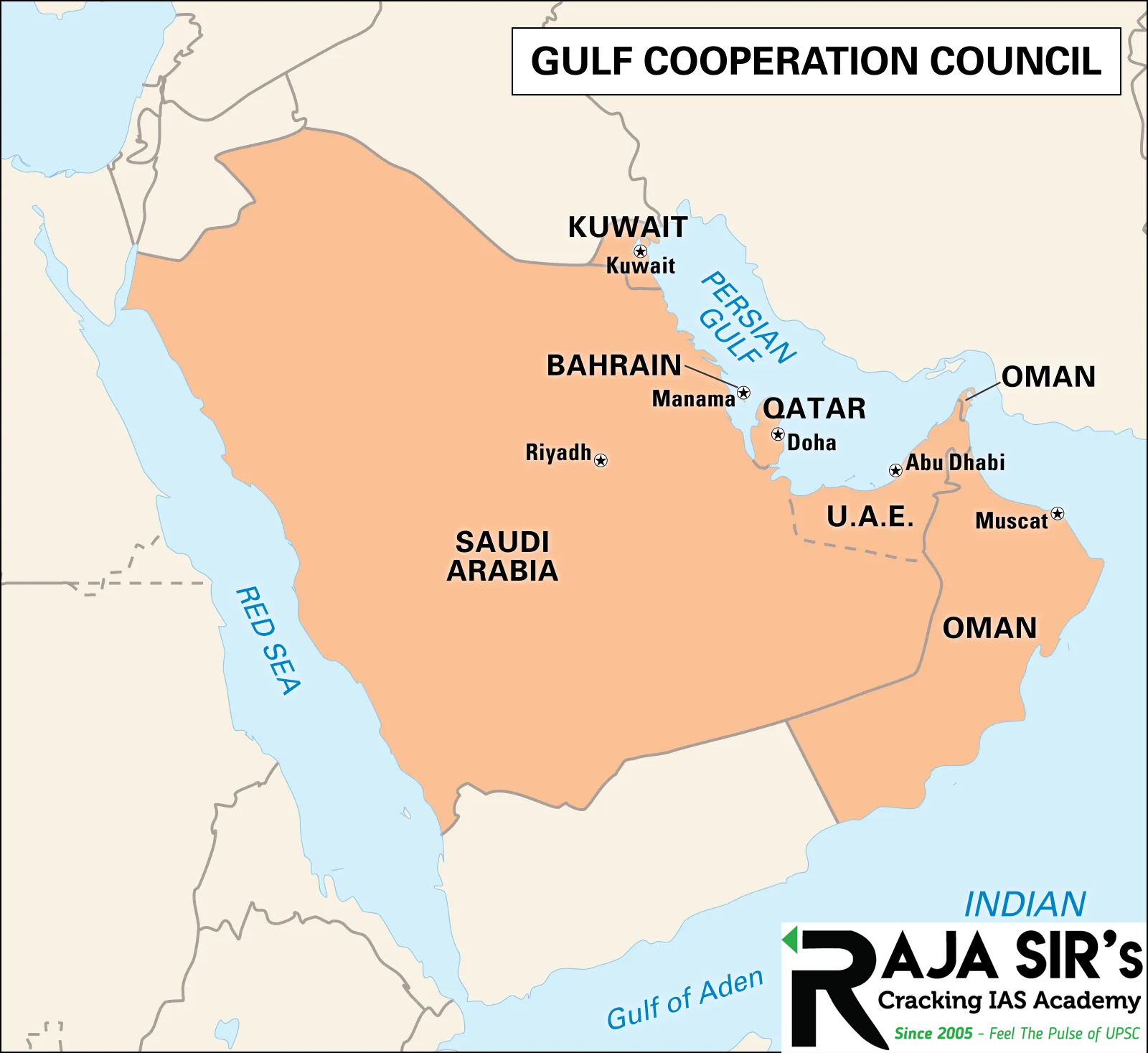- Home
- Prelims
- Mains
- Current Affairs
- Study Materials
- Test Series
Prioritise trade pact with GCC
- Despite the Gulf region being home to the largest Indian expatriate community with long-standing relations, its enormous economic potential remains unexplored.
- India is currently facing a trade deficit with Gulf Cooperation Council (GCC) nations.
- India’s trade deficit with GCC soared from $13.4 billion in 2016-17 to $66.8 billion in 2021-22.
- Mutually beneficial trade pact with GCC may become the solution to India’s current deficit problem.
GCC
- The Cooperation Council for the Arab States of the Gulf, known as the Gulf Cooperation Council (GCC), is a regional and economic union established in 1981.
- Members: Bahrain, Kuwait, Oman, Qatar, Saudi Arabia, and the United Arab Emirates
- Headquarters: Riyadh, Saudi Arabia.
- Aim: To achieve unity among its members based on their common objectives and their similar political and cultural identities, which are rooted in Arab and Islamic cultures.
- Out of 32 million non-resident Indians (NRIs), nearly half are estimated to be working in GCC countries.
- According to World Bank, India got $87 billion in foreign remittances in 2021.
- A noticeable portion came from the GCC nations.
 Trade with GCC
Trade with GCC
- The GCC countries are leading exporters of petroleum and mineral oils accounting for about 70 % share in their exports.
- UAE is India’s major destination for exports worth $28 billion.
- India had the highest trade deficit (2021-22) with Saudi Arabia ($25.3 billion).
- Petroleum and petroleum products are among India’s top imports from GCC.
- 66 % of its total imports of $119 billion in 2021-22
- 87 % of the oil consumed during April-September 2022
- Because of India’s oil dependency, India’s trade deficit with GCC is expected to rise.
- India is a supplier of agricultural and manufactured products to GCC.
- Export: Agricultural products, engineering goods, textiles, electronic and software products, and pharma products.
- Imports: Electric machinery and equipment, machinery and mechanical appliance, vehicles, and pharmaceutical products.
- India''s exports to the GCC increased by 58.26 % to about $44 billion in 2021-22 against USD 27.8 billion in 2020-21.
- These shows future trade possibilities.
Prioritize trade pact with GCC
- GCC provides for India’s energy security, while India ensures their food security.
- India and the GCC need to go beyond the traditional Free Trade Agreement (FTA) and include investments and services as a part of a comprehensive economic partnership.
- Under the Comprehensive Economic Partnership Agreement (CEPA), Indian merchandise got preferential market access to the UAE on over 97 % of its tariff lines accounting for 99 % of India’s exports to the UAE in value terms largely for labor-intensive exports.
- Early and effective implementation of CEPAs will provide a boost to India and GCC countries.
- The GCC pact aims to boost economic ties between the two regions.
- (sub-point) This pact can help India to balance the trade deficit with GCC countries and will provide a market for Indian exports.
The GCC region holds huge trade potential and a trade agreement would help further boost India''s exports to that market. With little push, the GCC trade pact will not only enhance India’s Growth but also will help India to be in good relations with GCC countries. Thus, GCC trade pact is a win-win for India and GCC countries.









 Latest News
Latest News
 General Studies
General Studies